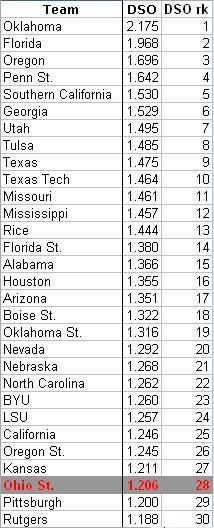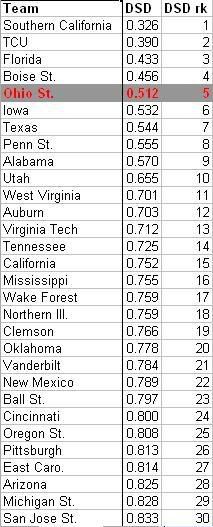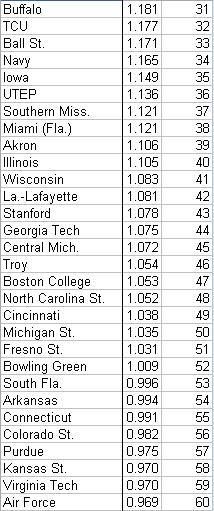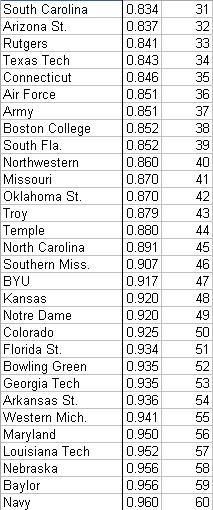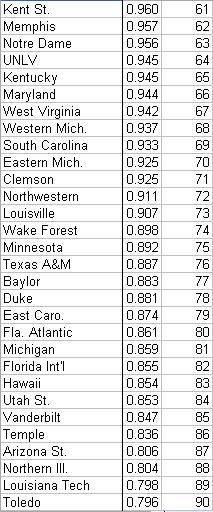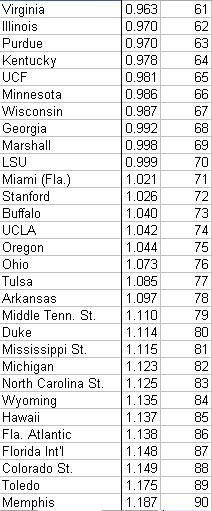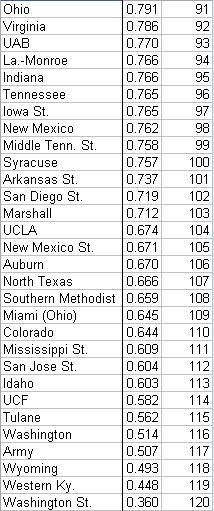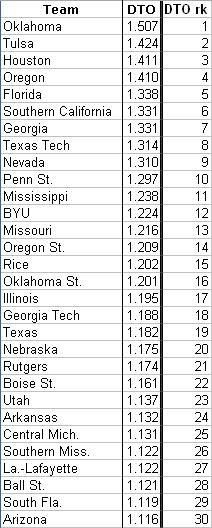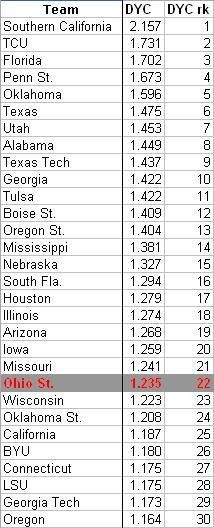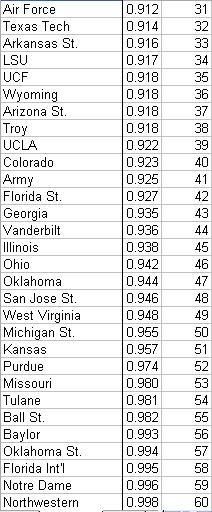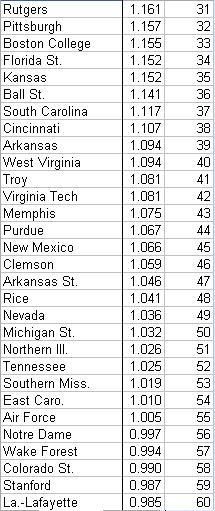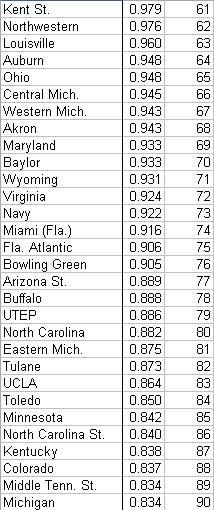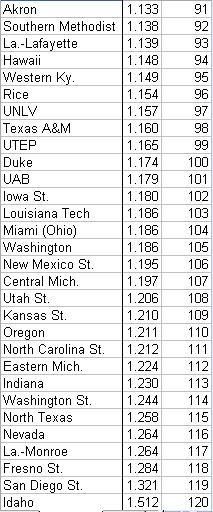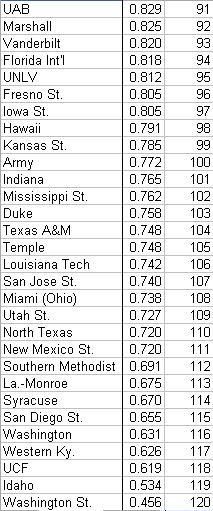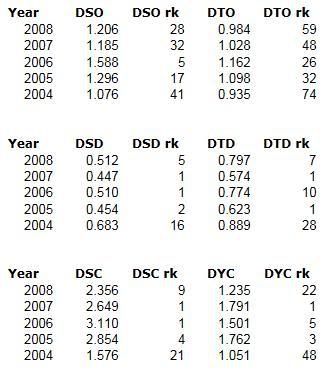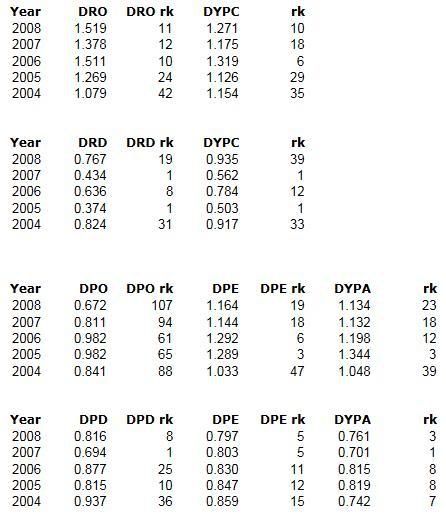The return of DSA
After a long hiatus, Differential Statistical Analysis[sup]TM[/sup] is returning to Buckeye Planet. Last year, I was too depressed to bother with this level of effort; and the most recent post before this sums up why.
For those who are new to DSA, you might want to review this thread from the beginning. If you're pressed for time, here's a brief synopsis:
DSA compares a teams statistics to the stats posted against their opponents. Differential Scoring Offense (DSO) for example compares how much you score compared to how much everybody else scored against your opponents. If you score twice as many points as your opponents usually give up, your DSO is 2. Sometimes I have expressed this in terms of percentage, but not this year. Differential Scoring Defense (DSD) works the same way, but a lower number is better. If your DSD is 2, you are giving up twice as many points as your opponents usually score.
By far the most popular of the DSA numbers is the Differential Scoring Composite (DSC). DSC is DSO divided by DSD, giving one number that incorporates how good a team is at scoring and how good they are at keeping other teams from scoring. The true power of this comes from the fact that it doesn't just compare a team to their opponents; it compares each team to ALL of the teams that ALL of their opponents have played.
Note: Those of you familiar with DSA will recall that every game against FCS (I-AA) opponents is factored out of every FBS (I-A) team's statistics.
What follows are the DSC numbers for every FBS team last year, including Reclassifying Provisional Western Kentucky (RP is the classification for a team new to the division).
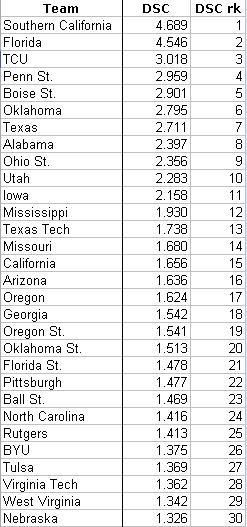
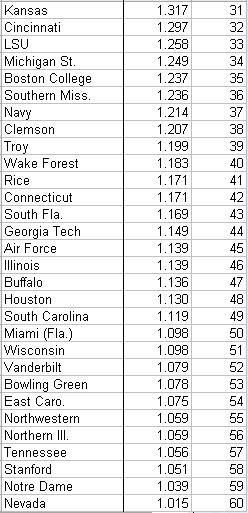
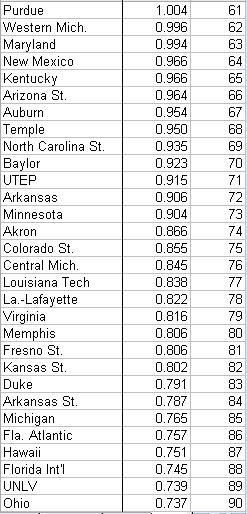
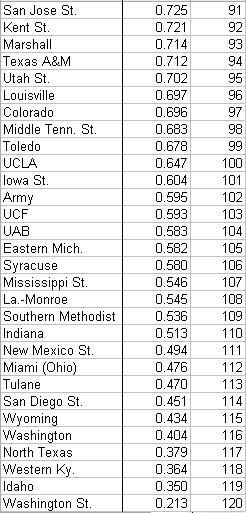
Florida's and USC's DSC numbers are the highest DSC numbers I've seen, and I have them calculated for every team going back to 2004. Ohio State's ninth place showing is their worst in this metric since that year. The Buckeyes led the nation in DSC in 2006 and 2007 and were 4th in 2005.
After a long hiatus, Differential Statistical Analysis[sup]TM[/sup] is returning to Buckeye Planet. Last year, I was too depressed to bother with this level of effort; and the most recent post before this sums up why.
For those who are new to DSA, you might want to review this thread from the beginning. If you're pressed for time, here's a brief synopsis:
DSA compares a teams statistics to the stats posted against their opponents. Differential Scoring Offense (DSO) for example compares how much you score compared to how much everybody else scored against your opponents. If you score twice as many points as your opponents usually give up, your DSO is 2. Sometimes I have expressed this in terms of percentage, but not this year. Differential Scoring Defense (DSD) works the same way, but a lower number is better. If your DSD is 2, you are giving up twice as many points as your opponents usually score.
By far the most popular of the DSA numbers is the Differential Scoring Composite (DSC). DSC is DSO divided by DSD, giving one number that incorporates how good a team is at scoring and how good they are at keeping other teams from scoring. The true power of this comes from the fact that it doesn't just compare a team to their opponents; it compares each team to ALL of the teams that ALL of their opponents have played.
Note: Those of you familiar with DSA will recall that every game against FCS (I-AA) opponents is factored out of every FBS (I-A) team's statistics.
What follows are the DSC numbers for every FBS team last year, including Reclassifying Provisional Western Kentucky (RP is the classification for a team new to the division).




Florida's and USC's DSC numbers are the highest DSC numbers I've seen, and I have them calculated for every team going back to 2004. Ohio State's ninth place showing is their worst in this metric since that year. The Buckeyes led the nation in DSC in 2006 and 2007 and were 4th in 2005.
Upvote
0




